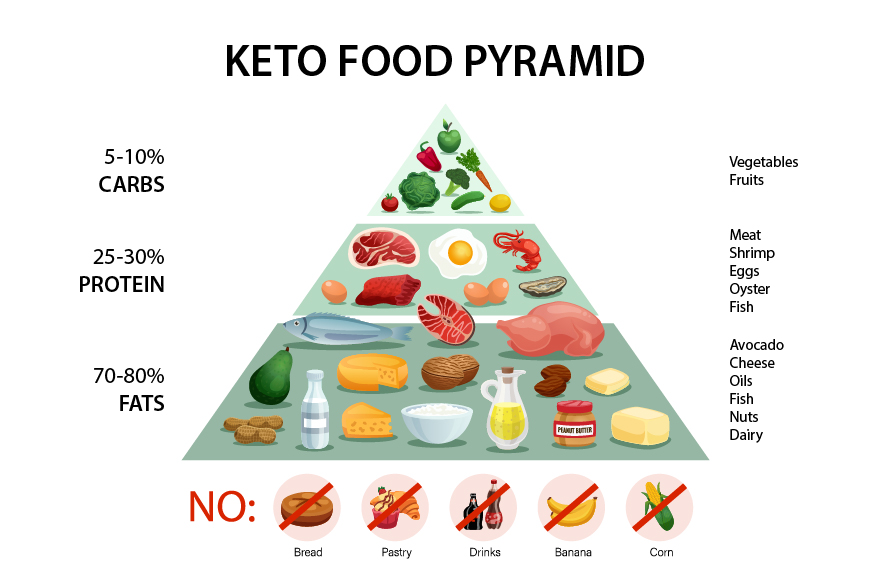
Our bodies burn macronutrients, such as carbohydrates, protein and fats, as fuel daily. Carbohydrates are burned first and are our main source of energy.
However, a high intake of carbohydrates can raise blood sugar levels, which may lead to multiple health issues, including unhealthy weight gain, diabetes type 2 and many others.
Studies have shown that ketones are a better and more efficient and beneficial alternative source of fuel for our body, brain and vital organs. So how are ketones produced? When the amount of carbohydrates is reduced and the amount of healthy fats is increased, the body starts to burn fats instead of carbohydrates and produces ketones as fuel. This process is called “ketogenesis”, which will lead one to a desired metabolic state known as “ketosis”.
One of the myths about Keto diet is that “there is not enough fuel for the brain as the brain feeds on glucose”. Glucose is the by-product of burning carbohydrates, which can penetrate the blood-brain barrier and feed the brain with the energy needed. However, glucose stores less energy than Ketones and hence when in ketosis you provide larger amounts of energy to your body and brain.
Many people report that when in ketosis they feel greater clarity and brain power.
What is the Ketogenic Diet?
The Ketogenic Diet, or Keto Diet, has been around since the 1920s. This diet consists of food that is high-fat, moderate-protein and low-carbohydrates. Staying on this diet can help one achieve “ketosis” to reduce the level of carbohydrates in the body and encourage the production of ketones.

You can refer to our infographics for more information on the types of keto-friendly food.
